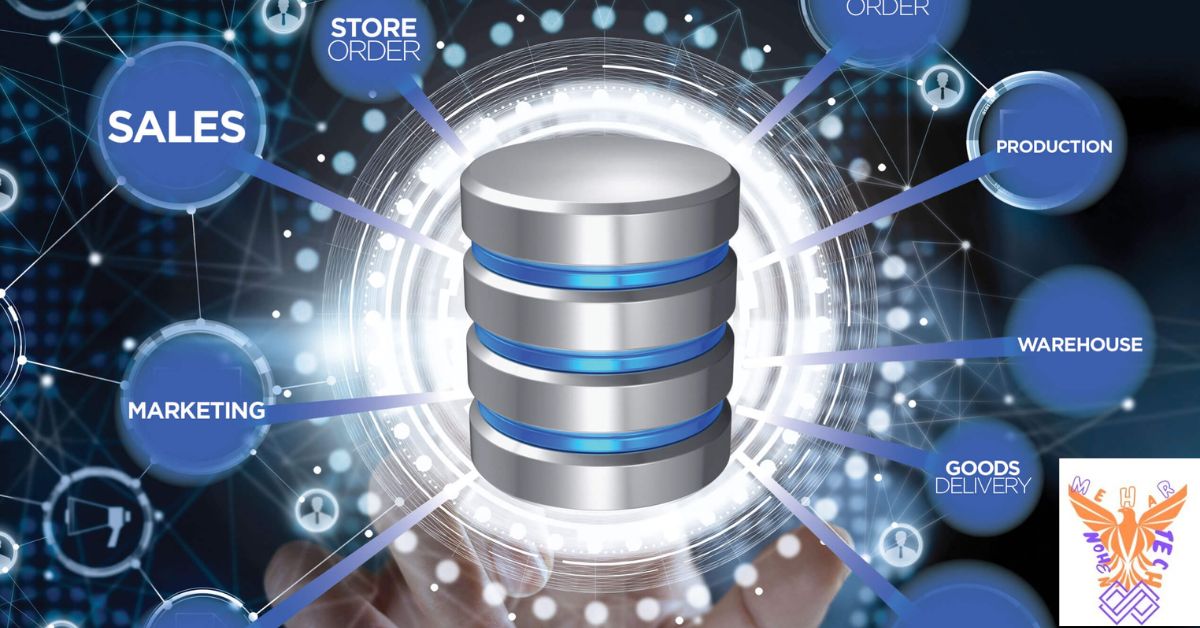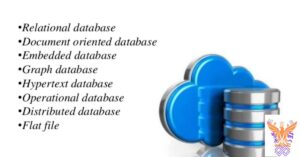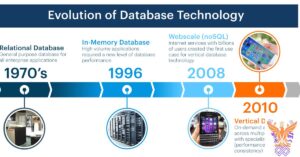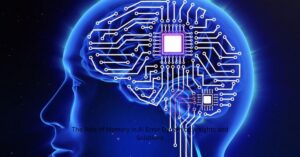Explore the realm of databases, where data holds the key. These digital giants serve as the foundation of information systems transforming the way we organize, oversee and retrieve data sets. Whether it spreadsheets or intricate cloud setups databases vary in forms and dimensions.
They are the heroes powering aspects of our lives from social media updates, to our medical history. Whether you are new to technology or an expert having a grasp of databases is crucial, in todays data society. They simplify business operations improve user interaction and protect our data effectively.
Lets delve into the world of database management and see how these systems influence our realm and spur innovation, in sectors. Brace yourself to unleash the power of data and uncover the ways databases are revolutionizing industries in ways.
What is a database (DB)?
A database is like a digital filing cabinet for your data. It’s a structured collection of information that you can easily organize, access, and update. Think of it as a super-smart spreadsheet on steroids, capable of handling massive amounts of data across multiple tables.
There are types of databases ranging from flat file systems to intricate relational databases. They rely on software known as a database management system (DBMS) to ensure operations. Whether you’re handling customer details, product stocks or scientific studies databases offer a framework, for storing and organizing your data.
What are databases used for?
Databases are, like the heroes of our world powering everything from online shopping sites to social media networks. They’re used to store and manage a variety of information ranging from your purchases to your medical history. Businesses depend on databases to monitor inventory handle orders and analyze customer habits.
That’s the tip of the iceberg. Databases also play a role in exploration aiding researchers in analyzing vast amounts of data and discovering new perspectives. They’re indispensable for governmental agencies overseeing records and for schools maintaining student data. In essence whenever theres a need to efficiently store organize and retrieve volumes of data you can be sure that a database is, at play.
Also read this post: Tech Trends Cochlear Implants
Types of databases
Relational
Relational databases are the workhorses of the data world. They organize data into tables with rows and columns, like a digital spreadsheet on steroids. SQL is their language of choice, letting you easily query and manipulate data. These databases shine when dealing with structured data and complex relationships.
Distributed
Distributed databases spread the love (and the data) across multiple locations. They’re like a team of databases working together, sharing the load and boosting performance. This setup is great for handling big data and ensuring your info stays available even if one location goes down.
Cloud
Cloud databases float your data up into the digital sky. They offer flexibility, scalability, and accessibility from anywhere with an internet connection. No need to worry about hardware or maintenance – your database provider handles all that. It’s like having a super-powered database that grows with your needs.
NoSQL
NoSQL databases liberate themselves from the format of their relatives. They are the nonconformists of the database realm, for managing data that’s unstructured or semi structured. Whether its document repositories or key value pairs NoSQL databases provide adaptability to meet the data needs of today.
Object-oriented
Object-oriented databases speak the language of object-oriented programming. They store data as objects, making them a natural fit for applications written in languages like Java or C++. It’s like your database and your code are best friends, sharing the same structure and concepts.
Graph
Graph databases are all about relationships. They excel at mapping and querying connections between data points. Think social networks or recommendation engines – anywhere the links between data are as important as the data itself. It’s like playing Six Degrees of Kevin Bacon, but with your data.
Multi model
Multi model databases are the Swiss Army knives of the database world. They support multiple data models within a single, integrated backend. Need both document and graph capabilities? A multi model database has got you covered. It’s like having a buffet of database types all in one place.
Self-driving
Self-driving databases are the new kids on the block. They use AI and machine learning to automate routine database tasks. From performance tuning to security patches, these smart databases handle it all with minimal human intervention. It’s like having a database that drives itself.
Data warehouse
Data warehouses are the information vaults of big business. They collect and store vast amounts of data from various sources, optimized for analysis and reporting. These powerhouses support business intelligence and data-driven decision making. It’s like having a crystal ball that lets you see patterns and trends in your organization’s data.
What are the components of a database?
- Tables: The workhorses of data storage, organizing information into rows and columns
- Fields: The individual data points within a table, like name or address
- Records: Complete sets of related fields, representing a single entity or transaction
- Primary Keys: Unique identifiers for each record, ensuring data integrity
- Foreign Keys: Fields that link tables together, creating relationships between data
- Indexes: Speed boosters for data retrieval, like the index of a book
- Views: Custom perspectives on data, tailored for specific users or tasks
- Stored Procedures: Pre-written SQL code snippets for common database operations
- Triggers: Automatic responses to specific database events, like data updates
- Constraints: Rules that maintain data consistency and accuracy
- Schema: The overall structure and organization of the database
- Data Dictionary: A catalog of all objects and elements within the database
- Query Language: The tool for communicating with the database, usually SQL
- DBMS: The software that manages and controls all database operations
- Users: The people or applications that interact with the database
- Security Measures: Safeguards to protect data from unauthorized access
- Backup and Recovery Systems: Safety nets to prevent data loss
- Transaction Logs: Records of all database changes for auditing and recovery
- Normalization: The process of organizing data to reduce redundancy
- Relationships: The connections between different tables and data points
These components work together like a well-oiled machine, creating a robust and efficient system for managing your data.
What are database challenges?
Here are some key database challenges:
- Data security: Protecting sensitive info from breaches and unauthorized access
- Scalability: Growing smoothly to handle increasing data volumes and user loads
- Performance optimization: Ensuring quick data retrieval and processing, even with complex queries
- Data integrity: Maintaining accuracy and consistency across the database
- Backup and recovery: Safeguarding against data loss and enabling quick restoration
- Integration: Seamlessly connecting with various applications and systems
- Compliance: Meeting regulatory requirements for data storage and handling
- Versioning and schema changes: Managing database updates without disrupting operations
- Concurrent access: Handling multiple users accessing and modifying data simultaneously
- Data migration: Moving data between different systems or updated versions
- Query optimization: Fine-tuning queries for faster results and efficient resource use
- Unstructured data management: Dealing with diverse data types in NoSQL environments
- Cloud transition: Moving from on-premise to cloud databases securely and efficiently
- Real-time processing: Handling streaming data and providing instant insights
- Data quality: Ensuring data cleanliness and relevance for accurate analysis
Remember, these challenges evolve as technology advances and data needs grow more complex.
What is a database management system?
A database management system (DBMS) is the brains behind the database operation. It’s a software package that acts like a super-efficient librarian for your data. This digital maestro organizes, stores, retrieves, and manages data in databases. It’s the middleman between the users and the database itself, ensuring smooth interactions and maintaining data integrity.
Think of a DBMS as your personal data butler. It handles the nitty-gritty details of data storage, so you don’t have to. Need to update a bunch of records at once? The DBMS has got your back. Want to ensure only authorized users can access sensitive info? It’s on it.
There are a variety of database management systems ranging from Oracle and MySQL, to MongoDB and PostgreSQL each with its strengths and specialties. A DBMS does more than just store data. It’s a tool. It handles access allowing multiple users to work with the data simultaneously without causing conflicts. Additionally it manages backup and recovery processes to ensure data safety in case of emergencies. Moreover it optimizes queries, for data retrieval.
Whether you’re managing a business or a large corporation having a reliable DBMS is essential. It forms the backbone for making data driven decisions streamlining operations and improving user interactions. As we delve further into the realms of data cloud databases and AI powered analytics the significance of DBMS will only increase. It plays a role behind the scenes in keeping our data driven world functioning
Evolution of databases
Databases have evolved significantly from their origins. Initially they were files resembling digital notebooks. The relational database revolution, in the 1970s marked a shift with the introduction of SQL completely transforming the landscape. These systems enabled queries and connections between data offering opportunities, for both businesses and researchers.
As data needs grew, so did databases. The rise of the internet brought NoSQL databases, designed to handle the massive scale and variety of web data. Cloud databases followed, offering scalability and accessibility like never before. Now, we’re seeing the emergence of NewSQL databases, combining the best of both relational and NoSQL worlds. Each step in this evolution has been driven by our ever-growing appetite for data and the need to manage it more effectively.
What is the future of databases?
The future of databases is looking both exciting and complex. We’re heading into an era where artificial intelligence and machine learning are becoming integral to database systems. These smart databases will not just store data, but understand and learn from it, offering predictive insights and automating complex decisions.
Edge computing is also shaping the future, with databases moving closer to where data is generated. This shift will enable real-time processing for Iot devices and mobile applications. We’re also likely to see more specialization, with databases tailored for specific industries or use cases.
With the increasing focus, on data privacy we can anticipate enhancements, in encryption and security functionalities integrated into database systems. The evolution of databases will persist, making them smarter more widespread and safer to cater to our expanding data requirements.
Frequently Asked Question
How do databases ensure data security?
Databases use encryption, access controls, and regular audits to protect sensitive information from unauthorized access and breaches.
What’s the role of indexing in database performance?
Indexing speeds up data retrieval by creating shortcuts to specific data, significantly improving query performance.
Can databases handle real-time data processing?
Yes, modern databases, especially stream-processing databases, can handle real-time data, enabling instant analysis and decision-making.
How do self-driving databases work?
Self-driving databases use AI to automate routine tasks like performance tuning, security patching, and backup management, reducing manual intervention.
What’s the benefit of multi-model databases?
Multi model databases are capable of accommodating a range of data models, within a system providing adaptability to manage data formats and configurations effectively.
Conclusion
As we come to the end of our exploration into the realm of databases it’s evident that they play a role, in shaping our era. Whether in the domain of databases or the adaptable landscape of NoSQL systems these data repositories drive various aspects of our lives from social networking platforms, to groundbreaking scientific discoveries.
As we come to the end of our exploration into the realm of databases it’s evident that they play a role, in shaping our era. Whether in the domain of databases or the adaptable landscape of NoSQL systems these data repositories drive various aspects of our lives from social networking platforms, to groundbreaking scientific discoveries.
The landscape of databases is evolving rapidly with self driving databases leading the charge cloud solutions expanding their capabilities and graph databases delving into relationships, with precision. The upcoming era holds the potential, for databases that go beyond responsiveness to become predictive intuitively meeting our requirements before we are even aware of them.















